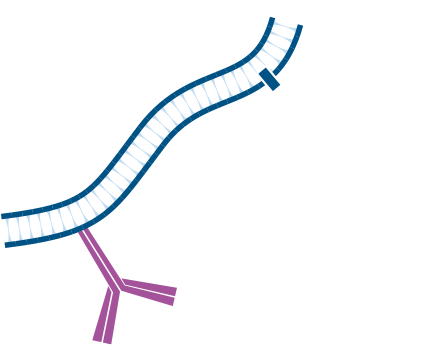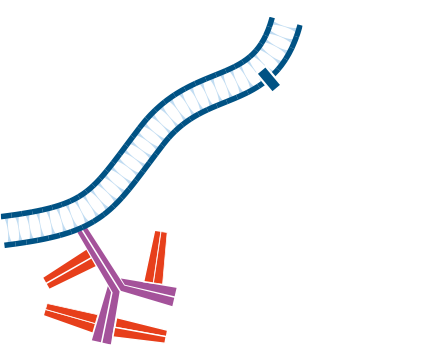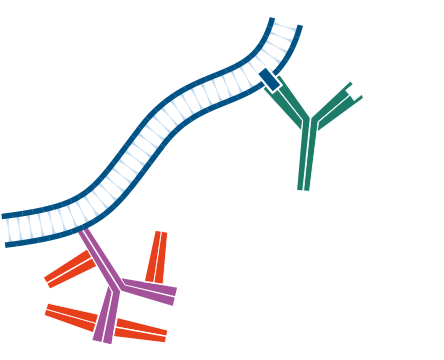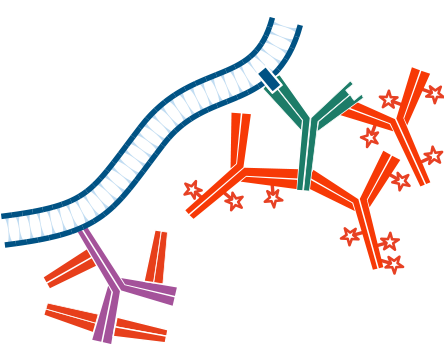Blocking: Use of unconjugated Fab fragments to block endogenous immunoglobulins and avoid off target signal
Background staining may be observed if a labeled secondary antibody is not adsorbed to minimize recognition of endogenous tissue Ig. When a primary antibody is the same species as the tissue under study (e.g. mouse primary used on mouse tissue), blocking endogenous Ig suppresses the off-target signal.




